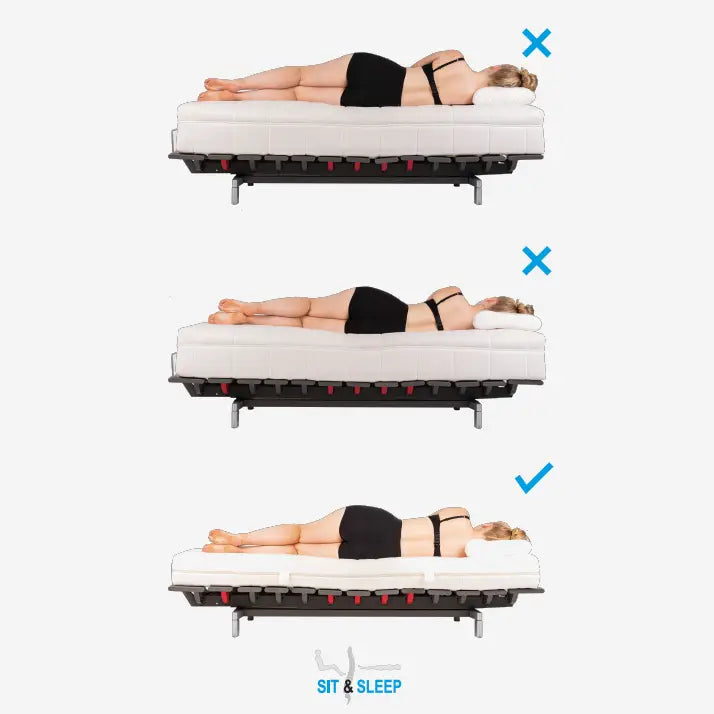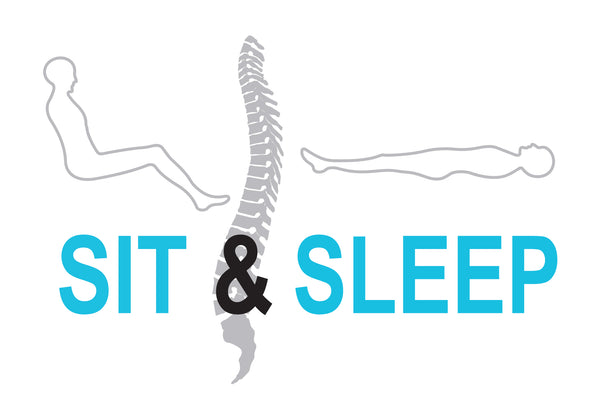
Should I buy a hard or soft mattress?
To know whether you should buy a hard or a soft mattress, it is important to know how the firmness of the different types of mattresses is determined.
Determining factors for the firmness of a pocket spring mattress
The firmness of a pocket spring mattress is determined by various factors.
First and foremost, the number of springs and their wire thickness play a crucial role in determining the mattress's firmness. The more springs per square meter, the firmer the mattress. The type of springs also influences the mattress's firmness:
- Barrel-shaped springs provide progressive support: they feel softer under light pressure and firmer under heavier loads.
- Cylindrical springs ensure even firmness across the entire mattress.
- Micro-pocket springs are smaller and provide more contact points, resulting in more refined support.
The comfort layer, which sits on top of the springs, also influences the feel of the mattress. Depending on the material used, the mattress can feel softer or firmer:
Memory foam – Feels soft and conforms to the contours of the body.
Cold foam – Provides strength and is inexpensive.
Latex – Provides a smooth, yet supportive experience.
Determining factors for the hardness of a foam mattress
It The type of foam, its density and the compression value (IDL) determine the hardness of a foam mattress.
· Type of foam
Each type of foam has unique properties that influence its hardness:
Cold foam (HR foam) – Resilient, inexpensive and provides firm support.
Memory foam (NASA foam) – Softer, conforms to the body and relieves pressure points.
- Density
The higher the density (kg/m³), the firmer and more durable the foam. For memory foam, the density is usually between 40-85 kg/m³, and for cold foam, between 30-60 kg/m³.
- Compression value
also known as ILD value (Indentation Load Deflection). This measures how much force is needed to compress the foam. A higher ILD value means a firmer mattress.
Determining factors for the firmness of a latex mattress
The firmness of a latex mattress is influenced by several factors, such as the type of latex, its density, perforation (ventilation channels), and the division into comfort zones. Here are the key elements:
Type of latex
There are different types of latex with varying degrees of hardness:
Natural latex – Derived from the rubber tree, it is elastic and resilient. It can be either soft or firm, depending on its density.
Synthetic latex – Less resilient and usually firmer than natural latex.
Talalay Latex – Softer and airier thanks to a specific production process, ideal for those looking for a flexible mattress.
Density of the latex (kg/m³)
The density of the latex determines the hardness and durability:
Less than 65 kg/m³ – Soft latex, gives a cozy and comfortable feeling.
65-85 kg/m³ – Medium firmness, a good balance between support and comfort.
More than 85 kg/m³ – Firm latex, ideal for those who need extra support.
Perforations and ventilation ducts
Latex mattresses often contain perforations or air channels that affect the firmness:
Larger perforations → Softer and more flexible.
Smaller or fewer perforations → Firmer and more supportive.
Characteristics of a hard mattress:
Little to no spring – The mattress gives little under pressure and provides firm support.
Less dent formation – Lasts longer without sagging quickly.
Suitable for stomach sleepers – People who sleep on their stomachs often benefit from a firm mattress because it prevents them from sinking in too deeply.
Less motion transfer – Suitable for couples, because the movements of one person are less felt by the other.
Characteristics of a soft mattress:
Lots of spring and contours – The mattress conforms to the body and provides a “cuddly” feeling.
Pressure relieving – Reduces pressure points on shoulders, hips and knees, which is especially pleasant for side sleepers.
Suitable for light to average weight persons – People with a lower body weight are less likely to sink too deeply.
More comfort and softness – Feels luxurious and is ideal for those looking for a cozy feeling.
Who is a firm mattress suitable for?
Firmer mattresses are more suitable for heavier people. A mattress that is too soft will create a "hammock" effect for heavier people, with insufficient spinal support. Stomach sleeping is actually best avoided, as the spine is in a hyperextended position, often causing neck twisting, which can cause discomfort. However, not everyone can break the habit of stomach sleeping, so stomach sleepers benefit from a firmer mattress to counteract the hyperextended position of the spine.
Who is a soft mattress suitable for?
Side sleepers are better off choosing a softer mattress to ensure proper shoulder and hip support and a straight spine. People with a light to medium build also prefer a soft mattress. This ensures proper spinal support and also prevents excessive pressure on the skin and muscle tissue, thus preventing tingling in the hands and feet. Furthermore, people with joint pain are advised to choose a mattress that is not too firm to minimize joint pressure.
Symptoms of a mattress that is too hard or too soft
If you recognize one or more symptoms in yourself, it is wise to review your mattress firmness:
- You sleep on your stomach or lie half-twisted
- You suffer from neck complaints
- You turn a lot during the night
- You are experiencing lower back pain
- You put your hand under your pillow or fold your pillow in half
- You want a thick pillow because your shoulders don't sink in enough
- You keep crawling up in bed, so you make the pillow thicker by pushing it against the headboard
- You sometimes suffer from numb hands, arms, feet, legs at night
- You can easily put your hand under the hollow in your back when you are lying on your back
- As a man, you will feel a lot of pressure on your shoulders when lying on your side, as a woman you will notice a lot of pressure on your shoulders and hips and you will not get enough support in the waist
Advantages and disadvantages of a hard mattress
Advantages
- A firm mattress is more durable, as mattresses lose their firmness over time.
- The contact surface with the body is smaller, which improves ventilation and makes it easier to turn over in bed.
Disadvantages
- If the mattress is too hard, the pressure will be concentrated on the shoulders and hips instead of being evenly distributed, which is annoying.
- A hard mattress doesn't support the lower back when lying on your back. It pushes the pelvis upward, causing the lower back to sag.
Advantages and disadvantages of a soft mattress
Advantages
- A soft mattress puts less pressure on areas like shoulders and hips, and your shoulder can sink deeper, making it more comfortable to sleep on your side.
- They are more comfortable for people who are lightweight.
Disadvantages
- If the mattress is too soft, you may sink into it, causing your spine to become misaligned.
- Moving and changing positions at night is more difficult.
- The contact surface with the mattress is larger and can therefore be warmer. However, the feeling of warmth also depends on the upholstery and material.
Our vision
Customers should not be guided solely by the firmness of a mattress.
This is only a small part of what a good mattress should meet.
A mattress is best chosen based on body shape and body weight.
A mattress should not be too hard or too soft.
It should be soft in the right places such as the shoulders/chest area
The pelvis should be lifted and the waist/lower back should be supported.
This is so that the spine maintains its natural curvature when lying on your back and when lying on your side the spine should be a straight line.


